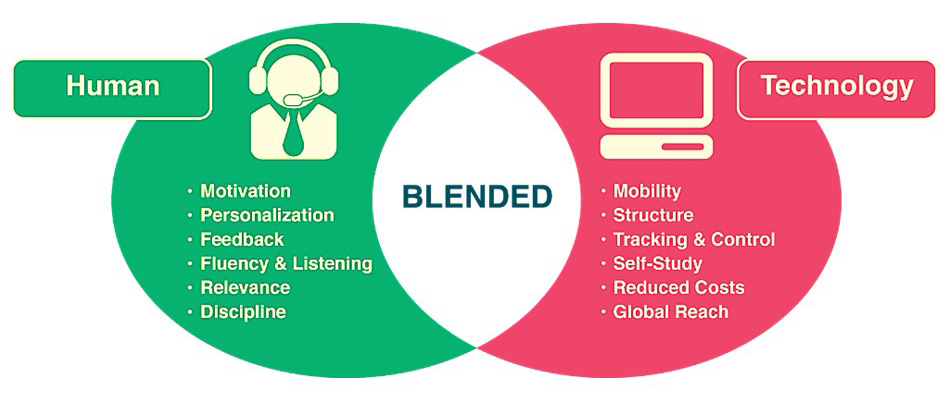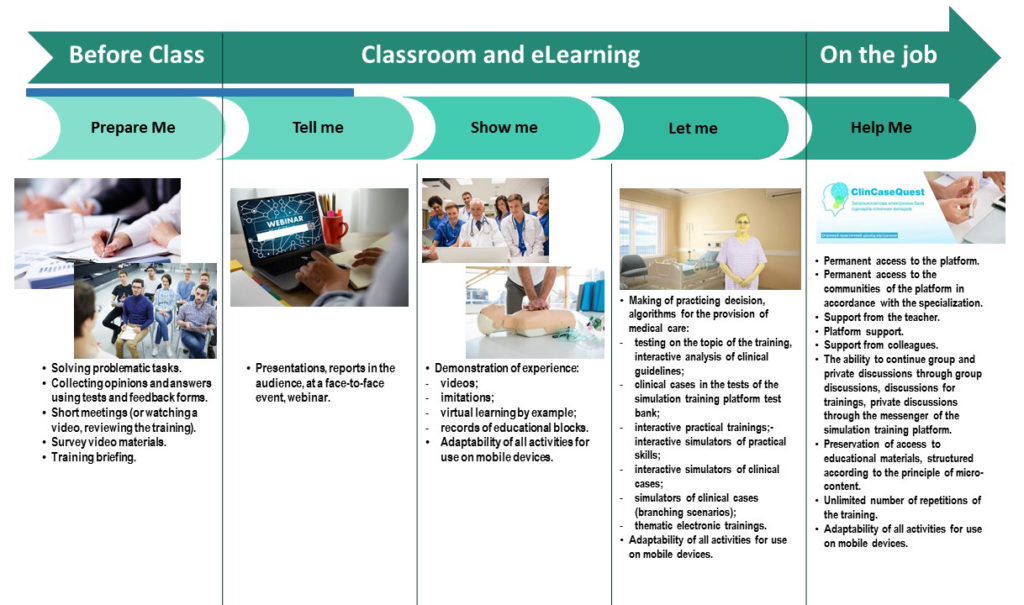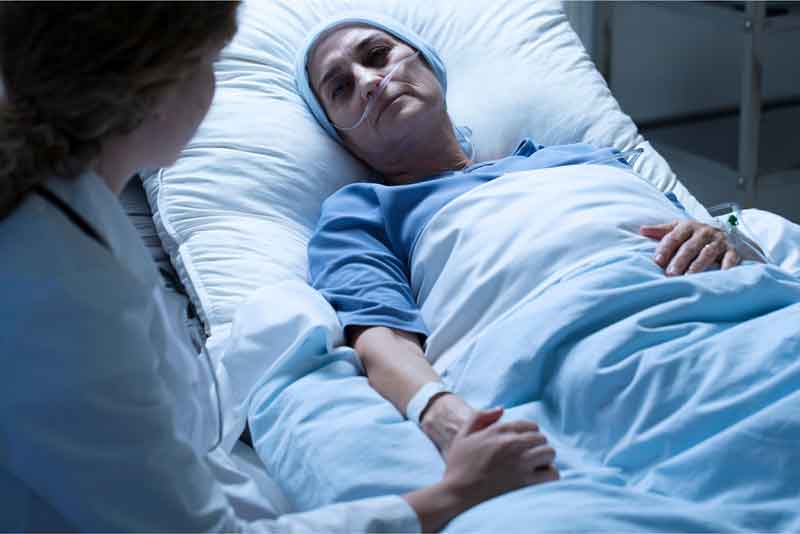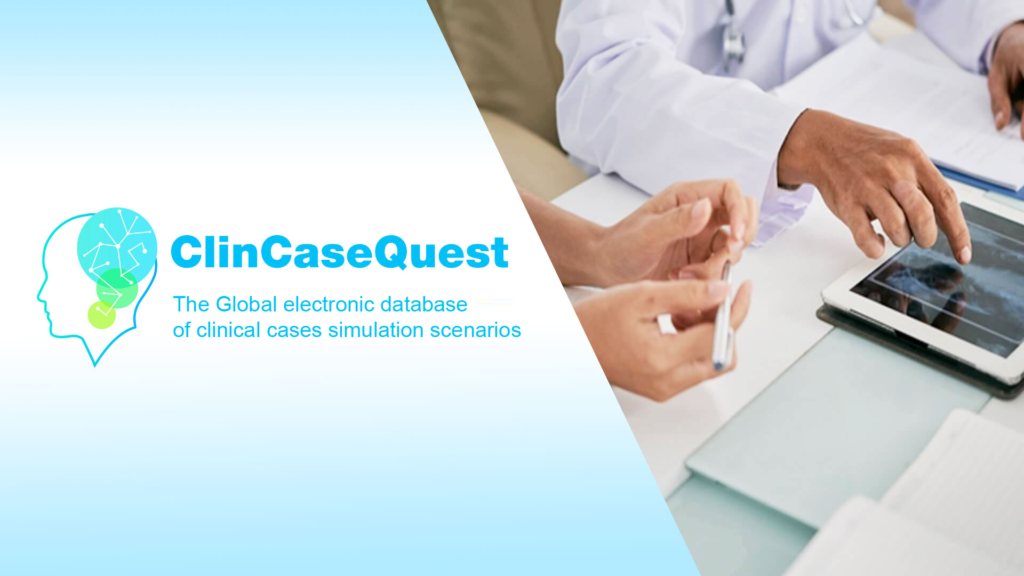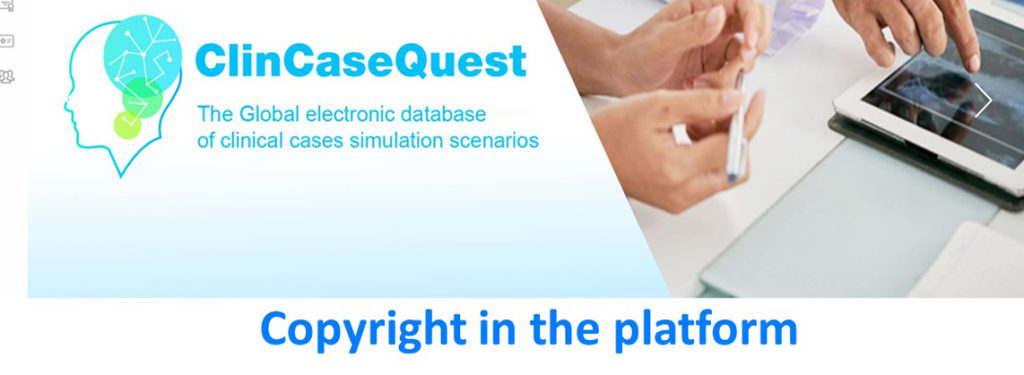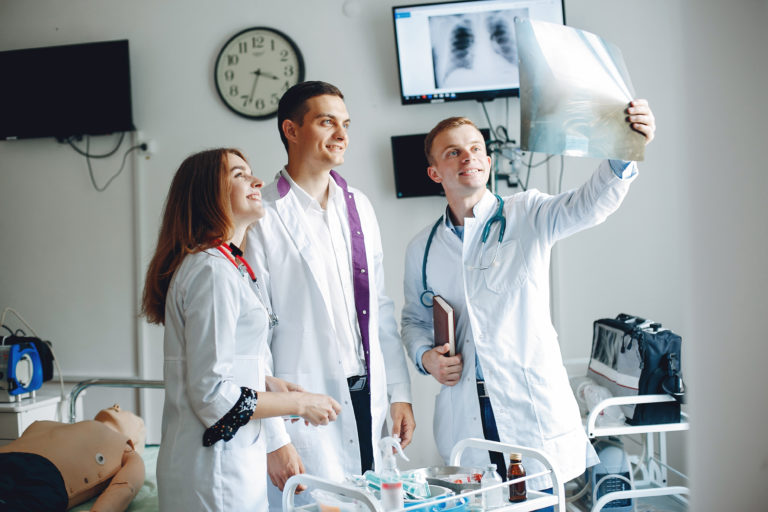Blended Learning in the Platform: What Do We Mix It With?

The global electronic database of clinical case scenario “ClinCaseQuest” can be useful in building a blended learning format for physicians.
Blended Learning is a combination of traditional forms of classroom learning with elements of e-learning, which uses special information technologies such as computer graphics, audio and video, interactive elements, etc.
In the “ClinCaseQuest” Global Electronic Case Scenario Database”, traditional learning formats can also be combined with:
- test clinical cases from the tests bank of the simulation training platform;
- interactive practical trainings;
- interactive simulators of practical skills;
- interactive simulators of clinical cases;
- simulators of clinical cases (branching scenarios);
- thematic electronic trainings.
The learning process in blended learning is a sequence of phases of traditional and e-learning, which alternate over time.
Recommended learning and content delivery sequence (RWD Technologies):
Before Class
– Prepare Me
Classroom and eLearning
– Tell me
– Show me
– Let me
On the Job
– Help Me
Choosing the format of blended learning training:
| Name of blending learning format | Organizational background | Purpose of building blended learning format |
| “Pre-training” | Central event – webinar/face-to-face training, platform training a few days before the central event | • Prepare doctors for face-to-face training, to level knowledge, to immerse in the topic, to motivate, to pose a problem, to exchange views and difficulties of routine clinical practice. • Pretraining can provide a motivational component, basic concepts, theory, a little practice. At the central event, attention can be paid to the practical analysis of issues, complexities and problems. |
| “Post-training” | Central event – webinar/face-to-face training, post-training on a Platform to consolidate the acquired knowledge at the central face-to-face event | • Consolidate the knowledge gained in face-to-face training, webinars, lectures, continue to solve clinical cases, practice practical skills. • Opportunity to have access to discussions, training materials. |
| “Pre-training + Post-training” before/during/after | Training on the Platform accompanies the central event – webinar/face-to-face training | • Pre-training on the Platform (a few days before the central event) – prepare doctors for face-to-face training to level knowledge, for immersion in the topic, for motivation, for problem statement, identification of difficulties that arise in clinical practice. Pre-training can provide a motivational component, basic concepts, theory, a little practice. • Central event – can be focused on the practical analysis of issues, difficulties and problems that arose during pre-training. • Post-training on the Platform after the central event to consolidate the knowledge gained in face-to-face training (up to several months, during the year before the next event) – to consolidate the knowledge gained in face-to-face training, webinars, lectures, maintain communication with colleagues, expand knowledge, work with clinical examples, further experience exchange. |
Principles of blended learning:
- Sequence. To obtain the effect, consistency in teaching is important: first, the student must feel the material, then – obtain theoretical knowledge from the teacher, and only then apply it in practice. In many ways, this principle intersects with the “inverted class” model.
- Visibility. Thanks to modern e-learning tools, you can create a knowledge base that the student will always have on hand. Unlike the classical model of teaching, in blended learning the student has access to methodical materials – video lessons, books or simulators.
- Practical application. Practical training is required to master the theory.
- Continuity. Blended learning is based in part on the principles of microlearning. Due to the availability of the material, the student can always go to the educational portal and get a “new portion” of the material.
- Support. In the distance learning system, a student can always ask a question to the teacher and get an answer quickly without waiting for the next face-to-face lesson.
The simulation training platform “Global electronic database of clinical case scenarios “ClinCaseQuest” provides the opportunity to develop training materials on topics needed by the customer (including the subject of educational activities conducted by the customer).
References:
1. Larry Bielawski David Metcalf Blended eLearning: Integrating Knowledge, Performance, Support, and Online Learning, 2003 by HRD Press, Inc.
2. Means, B., Toyama, Y., Murphy, R., Bakia, M., & Jones, K. (2010, September). Evaluation of Evidence-Based Practices in Online Learning: A Meta-Analysis and Review of Online Learning Studies. 3. John Watson. Blended Learning: The Evolution of Online and Face-to-Face Education from 2008-2015.
Register on our website right now to have access to more learning materials!
ClinCaseQuest Featured in SchoolAndCollegeListings Directory
Exciting News Alert! We are thrilled to announce that ClinCaseQuest has been successfully added to…
We presented our experience at AMEE 2023
AMEE 2023 took place from 26-30 August 2023 at the Scottish Event Campus (SEC), Glasgow,…
We are on HealthySimulation – world’s premier Healthcare Simulation resource website
We are thrilled to announce that our Simulation Training Platform “ClinCaseQuest” has been featured on…
Baseline Cardiovascular Risk Assessment in Cancer Patients Scheduled to Receive Cardiotoxic Cancer Therapies (Anthracycline Chemotherapy) – Online Calculator
Baseline cardiovascular risk assessment in cancer patients scheduled to receive cardiotoxic cancer therapies (Anthracycline Chemotherapy)…
National Institutes of Health Stroke Scale (NIHSS) – Online calculator
The National Institutes of Health Stroke Scale (NIHSS) is a scale designed to assess the…
SESAM 2023 Annual Conference
We are at SESAM 2023 with oral presentation “Stage Debriefing in Simulation Training in Medical…

